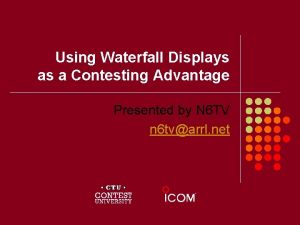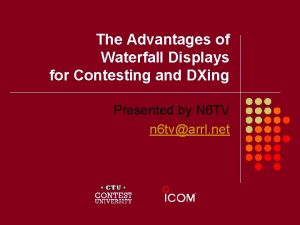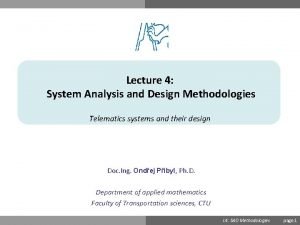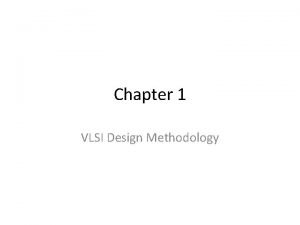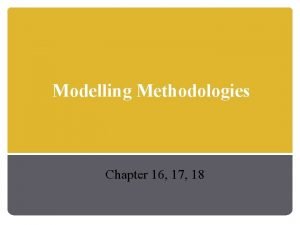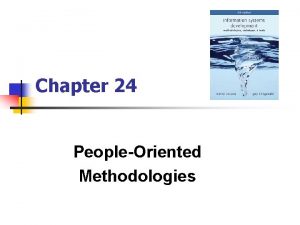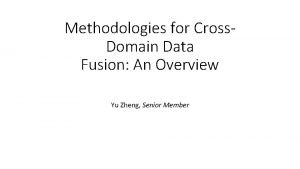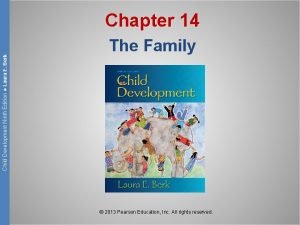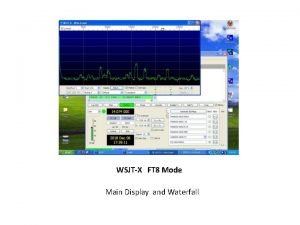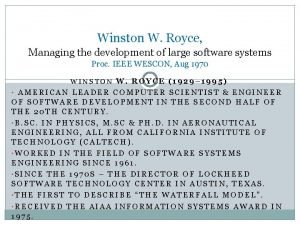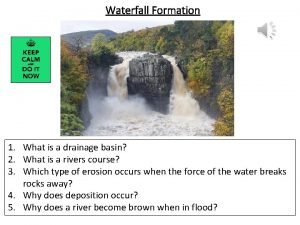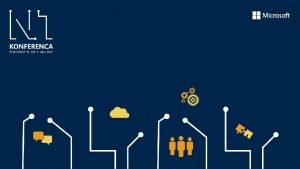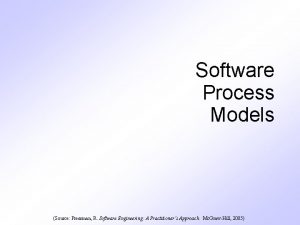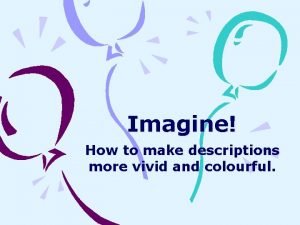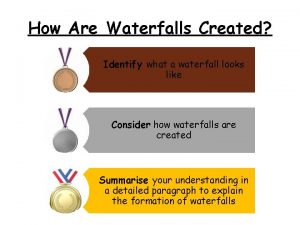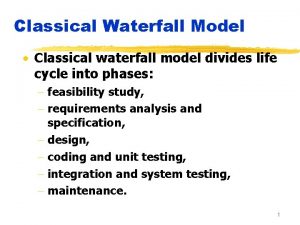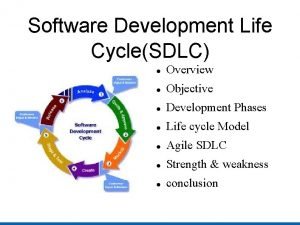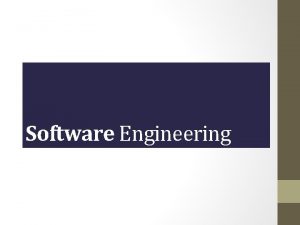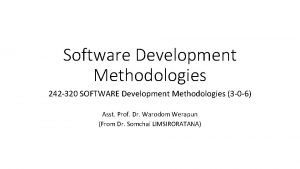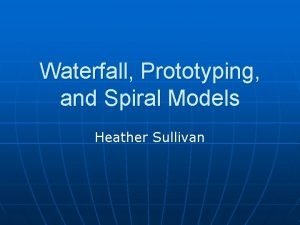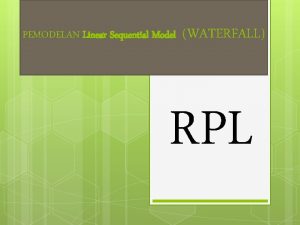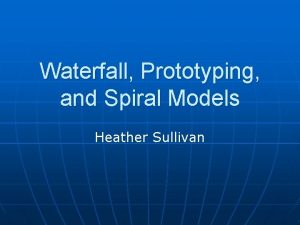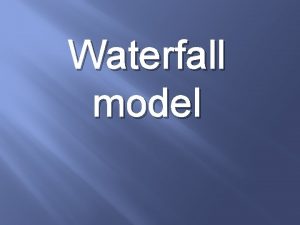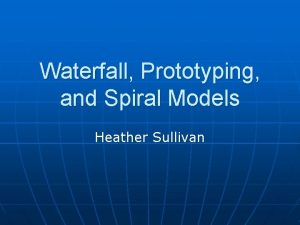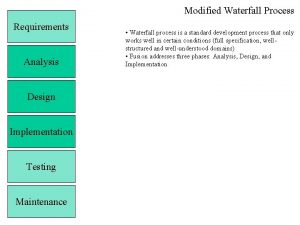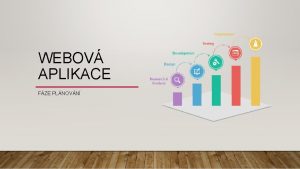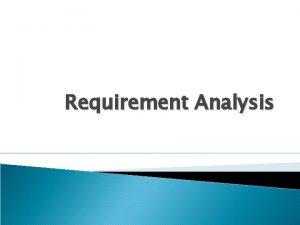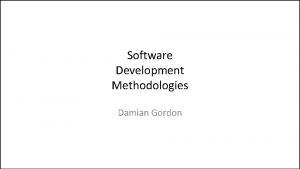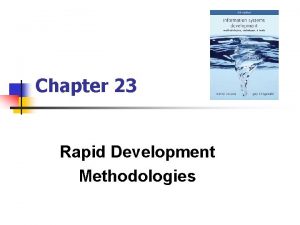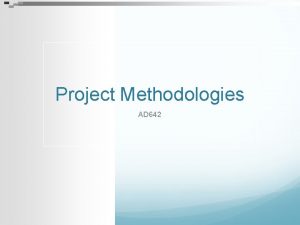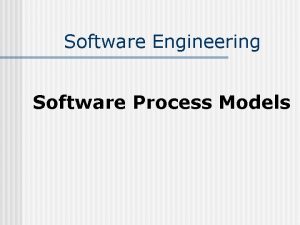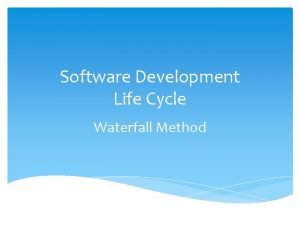SOFTWARE DEVELOPMENT METHODOLOGIES 2013 04 30 Methodologies Waterfall





























- Slides: 29

SOFTWARE DEVELOPMENT METHODOLOGIES 2013. 04. 30

Methodologies • Waterfall • DSDM • Prototype model • RUP • Incremental • XP • Iterative • Agile • V-Model • Lean • Spiral • Dual Vee Model • Scrum • TDD • Cleanroom • FDD • RAD

Waterfall • Sequential design process • Progress is seen as flowing steadily downwards (like a waterfall) through SDLC

Prototyping • Creating prototypes of software applications i. e. incomplete versions of the software program being developed • A prototype typically simulates only a few aspects of, and may be completely different from, the final product.

Incremental Build Model • The model is designed, implemented and tested incrementally (a little more is added each time). • Finished when satisfies all the requirements. • Combines the elements of the waterfall model with the iterative philosophy of prototyping.

Iterative and Incremental Development • Iterative and incremental development is any combination of both iterative design or iterative method and incremental build model for development.

Incremental vs. Iterative

A Bit Different Understanding

Effort in Iterative Development

Spiral Model • Combining elements of design and prototypingin-stages • Combines the features of the prototyping and the waterfall model • The spiral model is intended for large, expensive and complicated projects • Advantages of top-down and bottom-up concepts

Background • Top-down • deductive reasoning • analysis or decomposition • Descartes • G => 1 • Bottom-up • inductive reasoning • synthesis • Bacon • 1 => G

RAD • Minimal planning and fast prototyping. • Developing instead of planning • The lack of preplanning generally allows software to be written much faster, and makes it easier to change requirements.

Cleanroom • The Cleanroom process embeds software development and testing within a statistical quality control framework. • Mathematically-based software development processes are employed to create software that is correct by design, and statistical usage testing processes are employed to provide inferences about software reliability. • This systematic process of assessing and controlling software quality during development permits certification of software fitness for use at delivery.

Agile • Group of software development methods • Based on iterative and incremental development • Most important phrases • self-organizing, cross-functional • • teams adaptive planning, evolutionary development and delivery, a time-boxed iterative approach, rapid and flexible response to change. • A conceptual framework • The Agile Manifesto in 2001.

Scrum • Scrum is an iterative and incremental agile software development framework • A flexible, holistic product development strategy • Development team works as an atomic unit • Opposing to sequential approach

Lean (Kanban) • A translation of lean manufacturing principles and practices • Toyota Production System, • Today part of Agile community.

Lean Principles 1. Eliminate waste 2. Amplify learning 3. Decide as late as 4. 5. 6. 7. possible Deliver as fast as possible Empower the team Build integrity in See the whole

Extreme Programming (XP) • Improve software quality and responsiveness to changing customer requirements • A type of agile software development • Frequent "releases" in short development cycles • Introduce checkpoints where new customer requirements can be adopted.

XP Concepts (examples only) • Pair programming • Planning game • Test-driven development • Continuous integration

DSDM • An agile project delivery framework, primarily • DSDM fixes cost, quality and time at the outset and uses the Mo. SCo. W prioritization of scope • Pareto principle • M - MUST: Describes a requirement that must be satisfied in the final solution for the solution to be considered a success. • S - SHOULD: Represents a highpriority item that should be included in the solution if it is possible. This is often a critical requirement but one which can be satisfied in other ways if strictly necessary. • C - COULD: Describes a requirement which is considered desirable but not necessary. This will be included if time and resources permit. • W - WOULD: Represents a requirement that stakeholders have agreed will not be implemented in a given release, but may be considered for the future.

Test-driven development (TDD) • Relies on the repetition of a very short development cycle: first the developer writes an (initially failing) automated test case that defines a desired improvement or new function, then produces the minimum amount of code to pass that test, and finally refactors the new code to acceptable standards. • Test-first programming concept of extreme programming in the beginning • Today standalone methodology

Feature-driven development (FDD) • Iterative and incremental development process. • An Agile method • Driven from a clientvalued functionality (feature) perspective • Mostly part of other methodologies

Rational Unified Process (RUP) • An iterative software development process framework created by the Rational Software Corporation (IBM) • Not a concrete prescriptive process, but an adaptable framework, intended to be tailored by the development organizations • Expected to select elements of the process that are appropriate

V-model • The V-model is an extension of the waterfall model. • Show the relationships between development phases and test phases • Time and project completeness vs. level of abstraction

Dual Vee Model • Describes a model of complex development • For example: • Hardware • Platform • Application software • Development of a system's architecture is the “big V” • Components’/entities’ developments are the “small V”-s • It shows interactions and sequences of developing a complex system and a system of systems.

Shouldn’t forget

WATERFALL Details

Waterfall #1 • Jump to next phase only if the prior one is completed • PROs • Detailed early analysis cause huge advantages at later phases • If a bug found earlier, it is much cheaper (and more effective) to fix than bugs found in a later phase • Requirement should be set before design starts • Points to importance of documentation (minimized “broken leg” issue) • Disciplined and well-structured approach • Effective for stable software projects • Easy to plan from project management point of view

Waterfall #2 • CONs • Changes are expensive • Client does not explicitly know what he or she wants • Client does not explicitly know what is possible to have • Need to finish every phase fully • Long projects, difficult to keep the plan • Designers may not know in advance how complex a feature’s implementation • “Measure twice, cut once”
 Domain testing example
Domain testing example Waterfall display software
Waterfall display software Cpmcd in software engineering
Cpmcd in software engineering Waterfall display software
Waterfall display software Types of methodologies
Types of methodologies System design methodologies
System design methodologies Y chart in vlsi
Y chart in vlsi Agile methodologies wiki
Agile methodologies wiki Data modelling methodologies
Data modelling methodologies Kads
Kads Indigenous methodologies
Indigenous methodologies Business performance management methodologies
Business performance management methodologies Methodologies for cross-domain data fusion: an overview
Methodologies for cross-domain data fusion: an overview Child development 9th edition
Child development 9th edition Ft8 waterfall
Ft8 waterfall Winston royce
Winston royce Waterfall definition geography
Waterfall definition geography Waterfall projekti
Waterfall projekti Delta airlines customer service
Delta airlines customer service Software engineering process models
Software engineering process models Waterfall and shower strategy
Waterfall and shower strategy Formation of a waterfall
Formation of a waterfall Jawhar tourism
Jawhar tourism Gloomy metaphors
Gloomy metaphors Exocentric compound words
Exocentric compound words Waterfalls diagram
Waterfalls diagram Classical waterfall model
Classical waterfall model Waterfall methodology
Waterfall methodology Labassin waterfall restaurant philippines
Labassin waterfall restaurant philippines Strength and weakness of sdlc
Strength and weakness of sdlc

